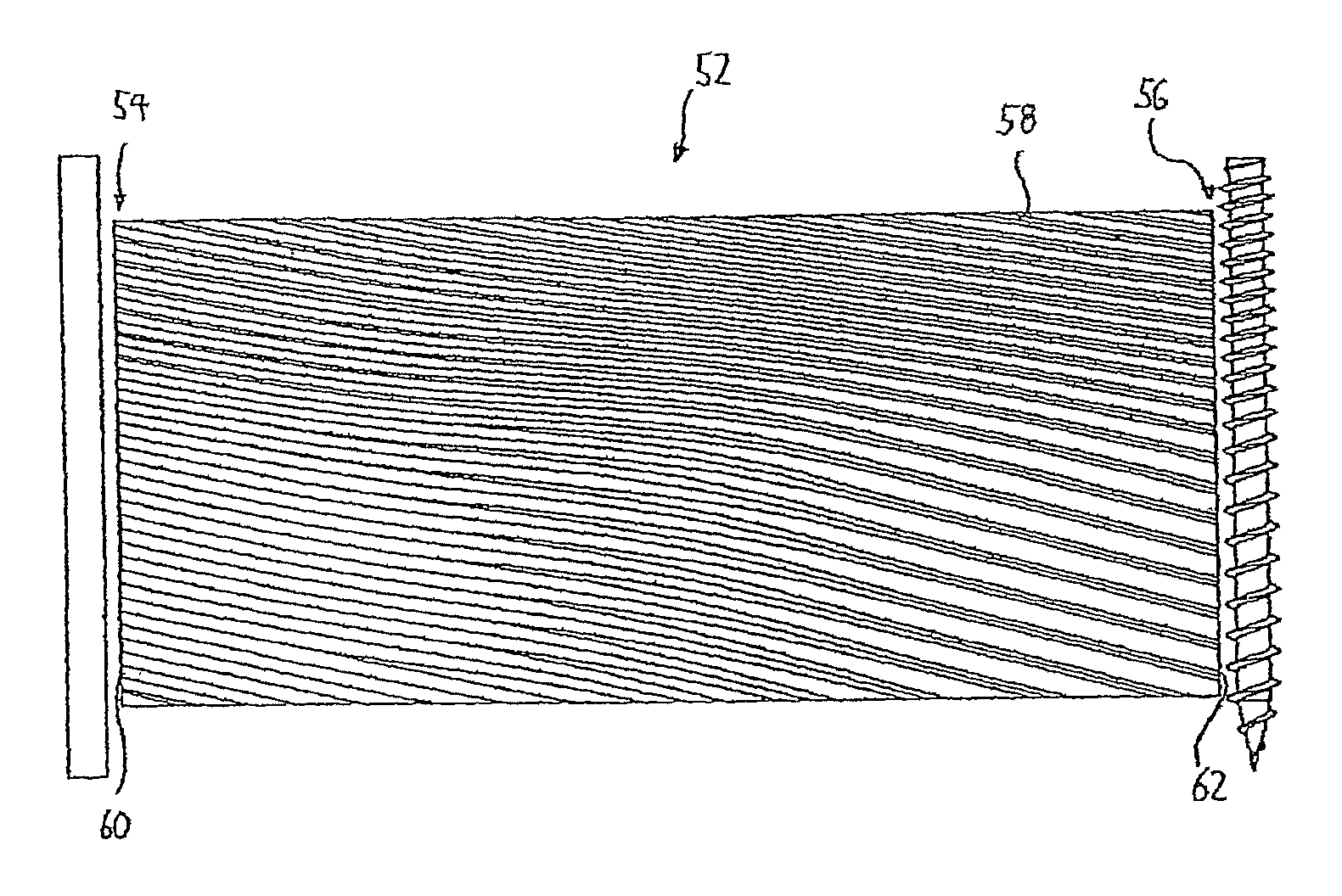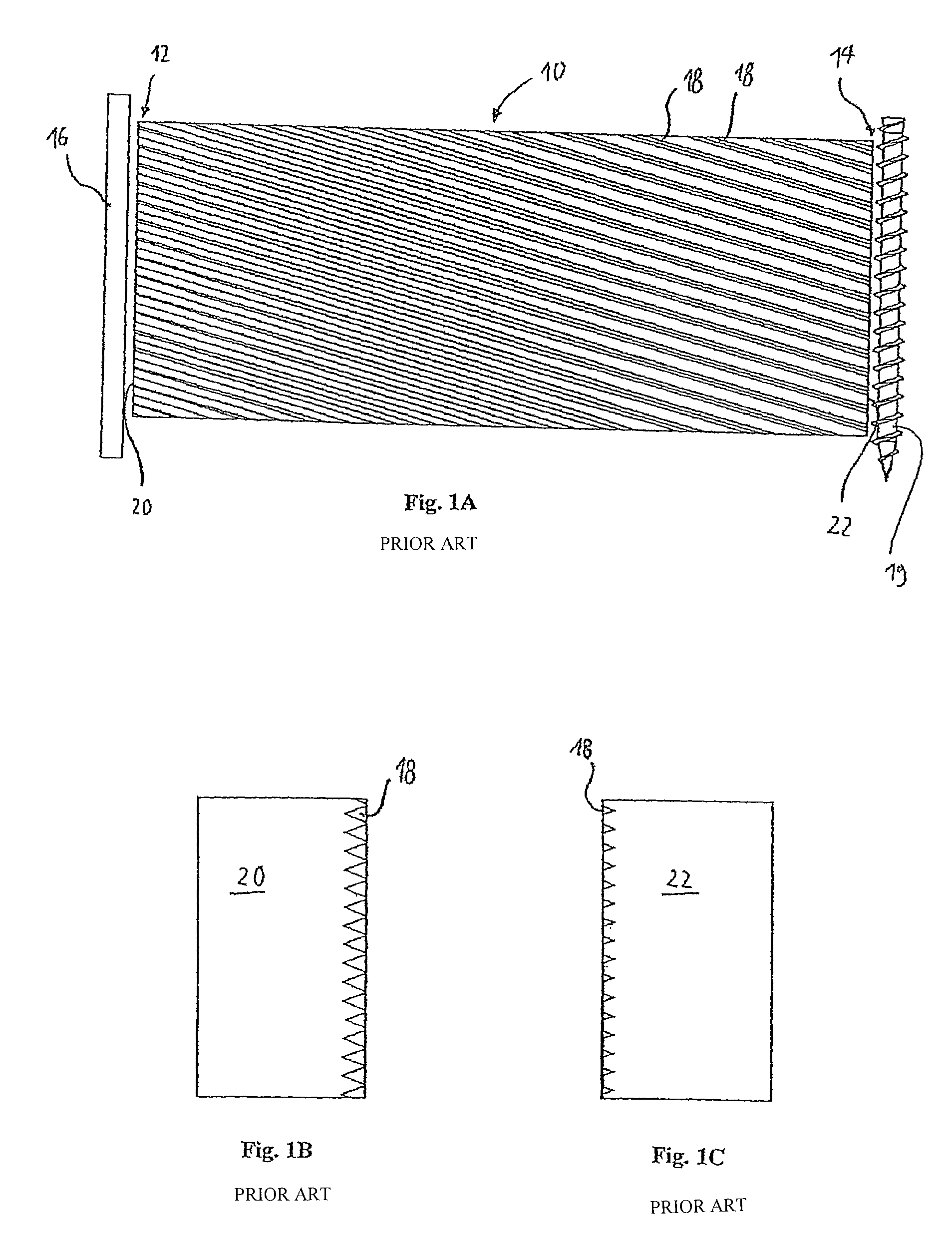Method and rolling die for producing a screw with a variable thread pitch
a technology of screw and thread pitch, which is applied in the direction of bolts, applications, fastening means, etc., can solve the problems of limiting throughput and large material loss, and achieve the effect of fast and economical implementation
- Summary
- Abstract
- Description
- Claims
- Application Information
AI Technical Summary
Benefits of technology
Problems solved by technology
Method used
Image
Examples
first embodiment
[0045]A second solution provides for varying the cross section of the thread ridge of the thread 28 by varying the flank angle and / or the thread depth in such a manner that in a region with a smaller thread slope or pitch the finish-rolled thread ridge comprises a smaller cross-sectional area, and in this way the volume defect is compensated for. The thread can thus have a more acute flank angle so that the thread, when viewed in longitudinal section of the screw, is narrower and comprises a more acute flank, and thus less material is used. In the method this can be implemented in a very simple manner by forming the widths of the depressions 34 at the second end of the rolling die 24 so as to be narrower and / or less deep in regions with a smaller thread pitch.
second embodiment
[0046]The third and preferred solution provides for the rolling profile to be designed in such a manner that a targeted volume transport from regions with a larger thread pitch into regions with a smaller thread pitch is caused, which volume transport just compensates for the volume defect. This third variant is described in the second embodiment, which hereinafter is described with reference to FIGS. 3A to 3C.
[0047]FIG. 3A shows a top view of a rolling die 52 according to a second embodiment of the present invention, which rolling die 52 comprises a first end 54 and a second end 56. In a manner similar to that shown in FIG. 2A, the rolling die 52 has a rolling profile comprising a multitude of elongated, curved, non-parallel depressions 58. The course of the depressions 58 is based on the one shown in FIG. 2A but has been additionally modified with a view to a special intended volume transport.
[0048]FIGS. 3B and 3C in turn show the top view of the end faces 60 or 62 of the first an...
PUM
| Property | Measurement | Unit |
|---|---|---|
| flank angle A1 | aaaaa | aaaaa |
| flank angle A2 | aaaaa | aaaaa |
| depth D1 | aaaaa | aaaaa |
Abstract
Description
Claims
Application Information
 Login to View More
Login to View More - R&D
- Intellectual Property
- Life Sciences
- Materials
- Tech Scout
- Unparalleled Data Quality
- Higher Quality Content
- 60% Fewer Hallucinations
Browse by: Latest US Patents, China's latest patents, Technical Efficacy Thesaurus, Application Domain, Technology Topic, Popular Technical Reports.
© 2025 PatSnap. All rights reserved.Legal|Privacy policy|Modern Slavery Act Transparency Statement|Sitemap|About US| Contact US: help@patsnap.com



